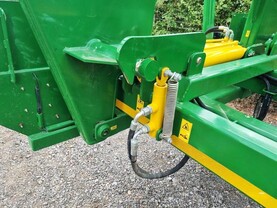Still a small tail: The vast bulk of harvesting is now complete but there is still a tail due to very difficult conditions in the northwest. The rest of the country is now virtually wrapped up with most of the straw baled also.
Bean harvesting is under way in places with early reports generally favourable. On a recent visit to our seed testing station, I was reminded by the staff there that bruchid beetle damage is increasingly common.
Bean seed issues: Bruchid beetle larvae eat visible holes in seeds, leaving obvious damage. Beetles live in hedgerows and migrate into flowering beans during periods of high temperature in late April/May. The beetles feed on pollen and lay their eggs on the developing pods. The eggs quickly hatch to larvae and bore their way into the pod and the developing seeds. Earlier pods tend to be worst affected.
The larvae feed in the developing seed, pupate and mature within the growing season. This means a new generation of beetles and seeds with circular holes. Damage may not prevent germination but it does exclude human consumption.
Growers are also advised to watch out for seed nematodes as these can quickly grow to be a serious problem. Nematodes are seed borne so all seed sources should be checked for the presence of this pest.
Planting: Any remaining winter oilseed rape is urgent at this point. No-till or strip-till systems may enable quickest establishment where ground is in good enough condition. Ground conditions are generally good and soil temperatures are running about average. This points to the need for seedbed nutrition rather than higher seed rates, especially with hybrids. Seed rates will still target 30-35 seeds/m² for hybrids (bit less for Clearfield) and 65-80 seeds/m2 for conventional varieties. Higher seed rates are not a satisfactory alternative for poor seedbed conditions.
The pressure for early planting of winter cereals will remain high. It is important to remember that BYDV is not the only risk as early drilling also increases grass weed pressure, plus septoria and take-all. Some fields may need to be planted early but a decent spread on planting date reduces the overall risk to any farm. Risks must be balanced against the inability to drill later and establishment challenges but problems that increase with early planting will only get worse. Rotation can help. Catch crops for GLAS need to be planted by 15 September.
Influence the CAP: Tuesday’s Crops Forum organised by Teagasc told us about the increasing environmental challenges that exist and the fact that there will be new obligations on all farmers to execute a number of measures to support environment and climate in the new CAP. The Department and Teagasc are currently looking for good ideas for things that growers could do at little cost to place on a menu of options to choose from in the new CAP. Growers are encouraged to email any ideas or suggestions to the Department at capstrategicplan@agriculture.gov.ie






 This is a subscriber-only article
This is a subscriber-only article









SHARING OPTIONS: